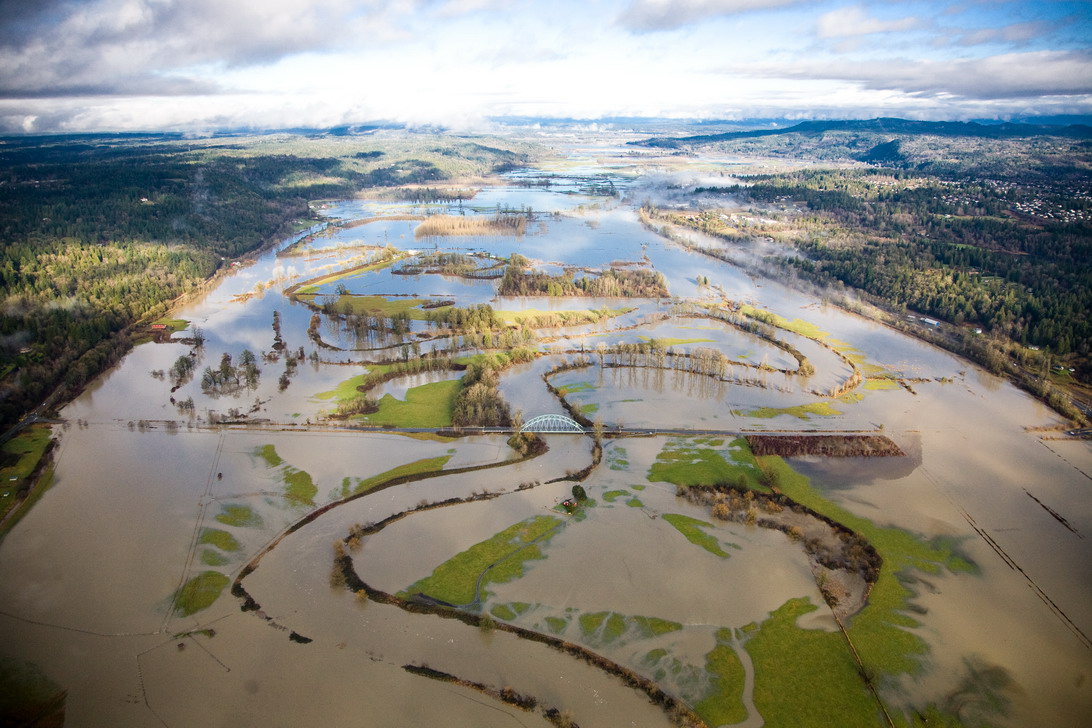4 ways to fend off flood risk during flood season

“Dark.” “Gloomy.” “Moody.” No matter how you describe the Pacific Northwest’s weather come mid-September, fall means the return of rain in our region. Even a few inches of rain can cause flooding that leads to property and environmental destruction, especially if you live in a flood-prone area. Flooding can also lead to hazardous waste contamination in our region’s waterways and ecosystems.
Flooding is the most common natural hazard in King County. The threat of flooding and any potential impacts and risks can never be fully eliminated, but it can be reduced by being proactive. As we approach the heart of fall, fend off floods before they arise with some of these tips to start.
Know your flood risk
Where there is rain, flooding is possible. Understand your flood risk at home, work, or school so that you can be prepared at all times. Check out kingcounty.gov/FloodMap to look at Federal Emergency Management Agency flood risk maps. You can search for any address in King County. For more help understanding your flood risk, contact the King County River and Floodplain Management Section at 206-477-4899
Get flood insurance
One way to safeguard yourself and your surroundings is to purchase flood insurance. Visit floodsmart.gov to learn about buying a policy and finding an insurance agent. You can also call Laura Hendrix, King County’s Floodplain Management Coordinator, at 206-477-7568 with questions.
Identify and dispose of waste at your property or business
- Identifying what is hazardous waste where you live or work.
- Safely disposing of hazardous materials before flood season starts is another step in the process.
Floods are already dangerous enough as it is, but there are some additional steps you'll need to take to keep hazardous waste from flowing into flood waters.
Sign up for alerts from King County
When rivers are rising, you can track conditions in real time with King County Flood Alerts or King County’s free Flood Warning App. Sign up for alerts or download the app at kingcounty.gov/flood. This will help you monitor potentially dangerous flooding situations, and it can help you steer your driving routes away from flooded areas around our region, too.
Regional efforts to manage flood risks are ongoing – you can share your voice!
As an individual, you can take steps to keep yourself, your loved ones, and your surrounding environment safer from the dangers of rising floodwaters. Flooding isn’t just one person’s problem to solve, however.
On a regional and systemic level, King County and local partners are working together throughout 2023 to update the King County Flood Management Plan, aiming to reduce regional flood risks while focusing on issues such as equity, healthy habitat, open space, agriculture, and climate change.
As climate change increases the potential for more frequent and severe flooding, community input from those most impacted by floods will be needed throughout the update process. To learn more and find ways to get involved in shaping what the final flood plan looks like, visit the Plan’s website.

 Translate
Translate